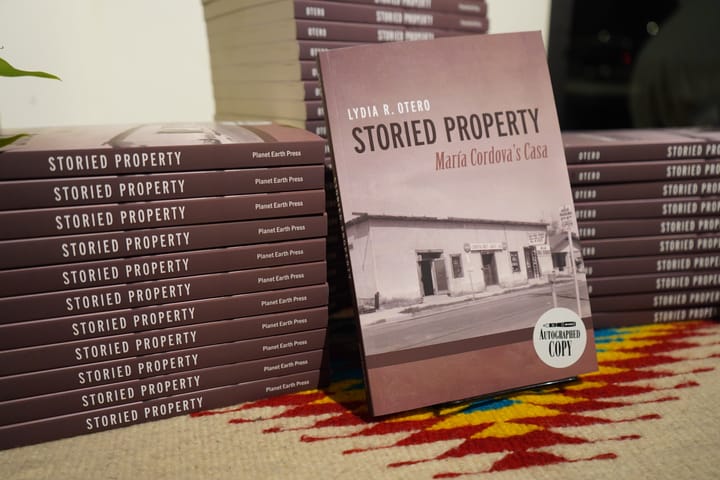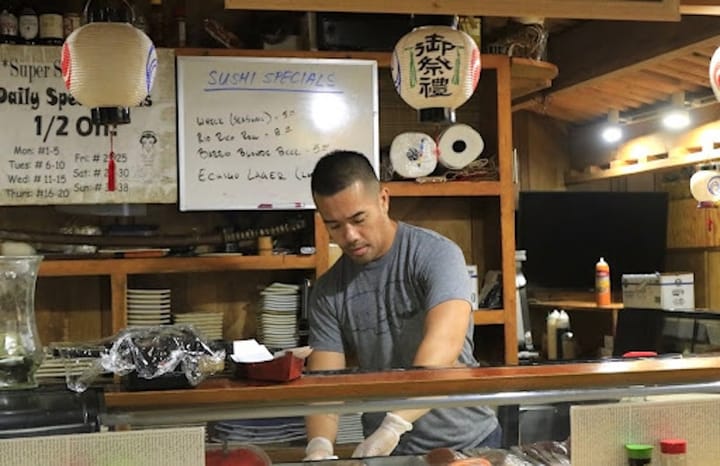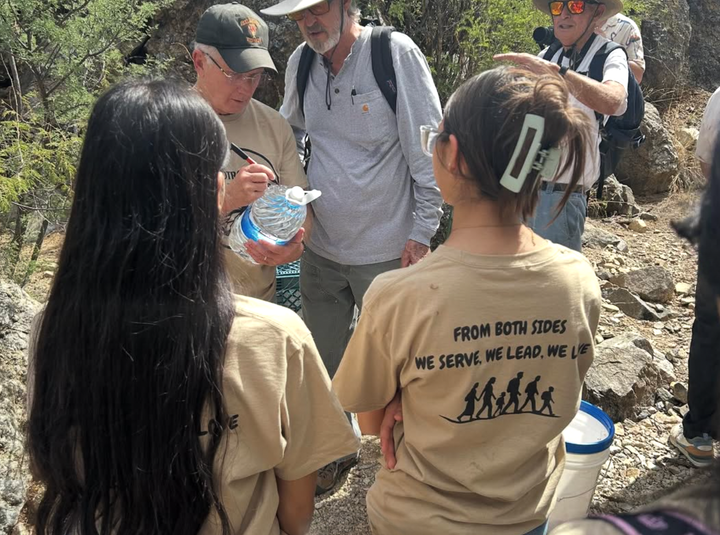Flandrau’s iconic glass windows restored by local artist
After a summer storm destroyed the Flandrau Science Center’s iconic spectrum-colored windows, Tucson artist Paul Anders-Stout meticulously restored the landmark installation, preserving its legacy and meaning for future generations.

When a summer storm shattered the historic spectrum-colored windows at the Flandrau Science Center and Planetarium, it left more than just broken glass. It left a void in the heart of the building.
Now, thanks to Tucson glass artist Paul Anders-Stout, that vibrant symbol of light and science has been painstakingly restored, piece by luminous piece.
The glass bricks are part of the original 1975 pâte de verre design and have become a landmark on the University of Arizona campus.
But a handful were shattered over the summer when high winds blew debris into the building, sending shards scattering into the gift shop.
Though no one was injured, the original work of artist Ken Toney was temporarily replaced with boards. For months, the empty spaces marked the absence of the four once-vibrant windows, a loss felt deeply by staff and longtime visitors alike.
"I mean, people were really sad, myself included," Communications and Marketing Manager Nick Letson told Tucson Spotlight. "You'd walk in, and there was just this void. That spectrum of color is what so many people remember when they think of this place."
The colored glass bricks weren't just decorative. Letson said the color spectrum represents the planetarium's focus on how light helps scientists understand the universe, including the composition of other planets and their potential to support life.
"So to have that spectrum of color right at the front of the building, it's poetic," Letson said.

It was clear from the beginning that any restoration effort would need to be faithful to the original—not just for the sake of appearance, but to honor the building's legacy as a designated Modern Architectural Classic by the Tucson Historic Preservation Foundation.
"I think it shows our resilience and our respect for the past. But us, our willingness to work with what we have now to take things into the future," Letson said.
Fortunately, Letson knew exactly who to call.
Letson also has a passion for working with glass and met local artist Anders-Stout through his work as the hot shop director at Sonoran Glass School. Anders-Stout has been working with glass since 1999, specializing in sand casting, fusing and handblown work. But this particular project carried more than professional significance for him.
Anders-Stout first visited Flandrau in 1986 to see Halley's Comet with his father, who told him the comet only passes once every 75 years and that he likely wouldn't be around to see it again.
That early memory made the invitation to help restore the windows feel personal. For Anders-Stout, it was a chance to preserve a piece of a place that helped shape his childhood—and maybe, through his work, continue creating memories for future generations.
But restoring the panels wasn't easy, even with his years of experience. Anders-Stout used tools from the 1970s to achieve the right glass texture, saying that the biggest challenge wasn't the glass but the black grout that connected each brick.
"The material they used 50 years ago had a certain color, a certain texture,” Anders-Stout said. “We had to inspect the old chunks that had fallen out after the storm just to figure out how to replicate it.”
He salvaged what bricks he could, cleaning and trimming cracked ones and replacing others with custom-cut pieces made to match. He even hand-chipped the edges with a chisel to get the right texture.

Each panel was rebuilt using a special mold and poured epoxy resin, with sand layered on both sides to replicate the original surface. Some windows, like the large one facing the gift shop, required an almost complete rebuild, with Anders-Stout using surviving panels and neighboring windows as references.
"One (window) was over four feet in both directions. Just moving it without breaking anything was a project in itself," Anders-Stout said.
But both Letson and Anders-Stout say the painstaking effort was worth it. Standing outside or inside the planetarium, it’s impossible to tell which windows are new and which are original.
"That was always the goal. To stay true. Because that history, those original materials, that matters to us," Letson said.
The pair hope the newly restored windows will last another 50 years. Plans are underway to gradually restore a few of the original panels, swapping them out two at a time, with the goal of keeping the planetarium beautiful and inspiring for the next generation of visitors.
Flandrau's mission is, after all, about sparking wonder— from elementary school field trips to lifelong learners.
"Some people come in just thinking the colors are pretty," Letson said, "but then they start to learn about the spectrum of light, about what makes those colors and what they mean in science. It's all connected."
For Anders-Stout, that connection between art and science is part of what makes Flandrau, and this project, so meaningful.
"Glass is just one way of bending light. But it's also this ancient, powerful material that humans have been working with for thousands of years," he said. "It's nice to think that someone might look at this window and just appreciate how it glows—and maybe that leads to a question about how light works, what colors are, or what stars are made of. That's where it all starts."
Angelina Maynes is a University of Arizona alum and reporter with Tucson Spotlight. Contact her at angelinamaynes@arizona.edu.
Tucson Spotlight is a community-based newsroom that provides paid opportunities for students and rising journalists in Southern Arizona. Please support our work with a paid subscription.




